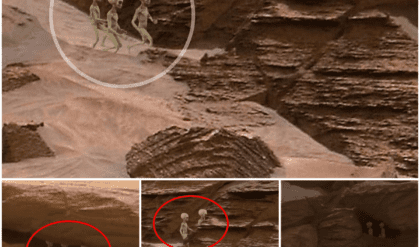In an unexpected turn of events, an hour-long earthquake rattled the surface of the Moon, presenting a perplexing challenge to NASA’s ongoing research efforts. This seismic activity, lasting far longer than any previously recorded lunar tremor, has raised eyebrows among scientists and sparked speculation about the hidden secrets of Earth’s celestial neighbor. This article delves into the enigmatic occurrence and its implications for our understanding of lunar geology and beyond.

Unprecedented Lunar Seismic Activity: The lunar earthquake, lasting a remarkable hour, sent shockwaves through the scientific community, figuratively and literally. Occurring in a region known as the Moon’s “nearside,” where much of NASA’s lunar exploration has focused, the event presented a unique opportunity to study the Moon’s interior structure and geological processes. However, it also raised questions about the nature of lunar seismic activity and its potential implications for future lunar missions.

Challenges for NASA’s Research Efforts: NASA’s research efforts have long been dedicated to unraveling the mysteries of the Moon, from its formation and evolution to its potential as a future destination for human exploration. However, the unexpected earthquake poses new challenges for scientists and engineers tasked with understanding and mitigating the risks associated with lunar exploration. The prolonged duration of the tremor suggests underlying geological activity that may impact the safety and feasibility of future missions.

Interpreting the Strange Message: The hour-long earthquake on the Moon carries a strange message for scientists and space enthusiasts alike. While seismic activity on the Moon is not unprecedented, the duration and intensity of this event defy conventional explanations. Some researchers speculate that the earthquake may be indicative of tectonic activity or volcanic processes occurring beneath the Moon’s surface, while others entertain more exotic possibilities, such as the presence of subsurface water or even the influence of extraterrestrial forces.

Implications for Lunar Exploration: The seismic event on the Moon highlights the importance of continued exploration and research to unlock the secrets of Earth’s celestial companion. Understanding the Moon’s geology and internal structure is crucial for planning future missions, including crewed missions to establish a sustainable human presence on the lunar surface. By studying seismic activity and other geological phenomena, scientists hope to gain insights into the Moon’s history and potential resources that could support future exploration endeavors.
Looking to the Future: As NASA and other space agencies continue their efforts to explore the Moon and beyond, the hour-long earthquake serves as a reminder of the dynamic and ever-changing nature of our solar system. From unraveling the mysteries of lunar geology to preparing for future crewed missions, the seismic event presents both challenges and opportunities for scientific discovery and exploration. By leveraging cutting-edge technology and international collaboration, researchers aim to uncover the secrets of the Moon and unlock new frontiers in space exploration.
The hour-long earthquake on the Moon has left scientists intrigued and eager to unravel the mysteries of Earth’s celestial companion. As NASA’s research efforts continue to probe the lunar surface, the seismic event serves as a poignant reminder of the dynamic nature of our solar system and the boundless opportunities for discovery that lie beyond. With each new revelation, we move closer to understanding the Moon’s enigmatic past and shaping its future as a destination for human exploration and scientific inquiry.





